How to choose a microphone

TIP FOR BEGINNERS:
For a beginner or undemanding user who is looking for a complete standard and will use the microphone for normal recording or sound system installation in a hall, we recommend the traditional dynamic microphone. You can’t go wrong with it and you'll get a totally versatile device. If needed, our experts will be happy to help you make up your mind at the telephone number 169 941 99 (Mon-Fri 9:00 a.m. - 4:00 p.m.) or at the email address .<Microphones are divided by several different criteria. They are distinguished from each other according to the structure, the size of the internal capsule, the frequency and directional characteristics and method of use, which can be quite complicated for a beginner. However, our sales consultants will advise you on choosing your microphone.
From the structural point of view, two basic types of microphones are used in sound recording: dynamic and condenser ones.
The basic division of microphones
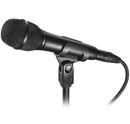
For dynamic microphones, there is a membrane that moves under the pressure of sound waves and moves through a coil in an electric field. Their advantage is a relatively strong output signal, easy construction and higher durability. They do not need a power supply or a powerful preamplifier and they tolerate high acoustic pressures (high volume of the sound source). Dynamic microphones are therefore used on stages. They are used for recording singing, individual drums or bass and guitar combos. Dynamic microphones are also not as sensitive to surrounding noise.
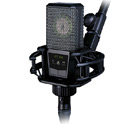
Another type is condenser microphones, where the acoustic vibrations vibrate the membrane which is one of the capacitor electrodes. This is connected to an electrical circuit. By varying the position of the membrane, the capacity of the condenser changes, creating a sound recording. However, condenser microphones need a 48-volt source - so-called phantom power. This power supply is now part of all mixing consoles and sound cards. Since the condenser microphones have a weak output, one of their internal components is also an amplifier.
Condenser microphones offer faithful audio and are very sensitive, so they are the ideal solution for studios (including home studios). They are used primarily for vocal and solo acoustic instruments such as violins, saxophones, clarinets or pianos.
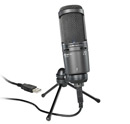
USB microphones are also popular. These are condenser microphones with a USB interface. They are ideal for those who want to be flexible when recording. This type of microphone can just be plugged into a PC / Mac and you can start recording immediately. You no longer need a sound card when you use them, because they have one built in. This makes it easy to record at anytime, anywhere. These microphones are very popular for recording so-called podcasts, Youtube videos, and so on.
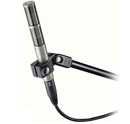
Under retro mania, ribbon microphones are experiencing a renaissance. In principle, they are dynamic microphones, but they provide a more faithful sound and are more sensitive to handling. They also use changes in the electromagnetic field, in which the thin strip is vibrated by the sound. They capture more details because the strip is not connected by a coil. Due to the specific design, they record sound from two opposite sides, which can be useful when recording duets. They are used to record voices, but also some acoustic instruments such as violins, because they have a pleasant treble. They are also suitable for studios to record ambient “noise”.
Specific microphone types
But there are other types of microphones that are suitable for special purposes. So-called hand-mics (hand-held vocal microphones) have a modified structure so that the capsule does not catch the movement of the singer's hand over the microphone. Wireless devices have a transmitter so the singer can roam wildly on the stage without getting tangled up in the cords. Small lavalier microphones are mounted directly on instruments, which is useful when providing sound for wind instruments. Special boundary microphones which are placed on the ground, can be used for recording a bass drum or piano.
Studio perfectionists and demanding producers use tube microphones.
Directional characteristics
An important figure for a microphone is the directional characteristics which determines which directions the microphone records sound from. The most widespread and versatile is the so-called cardioid one. Microphones with this characteristic are directional, but not so narrow, so they can handle some of the surrounding sounds.
However, if you need to isolate the sound better than other sounds, then hypercardioid characteristics are more appropriate. This applies, for example, when recording songwriters who sing while playing a guitar. Due to its narrow directional features, the microphone focuses on the main source of sound - the vocals - and the accompanying instrument is no longer heard much in the microphone.
Conversely, broad characteristics are useful for recording choirs or larger instruments such as a piano or vibraphone. The spherical characteristics will then best be able to capture the room acoustics as well. Some more expensive large- condenser microphones have switchable characteristics, while more expensive small-diaphragm condenser microphones offer different directional characteristics of the replaceable inserts.
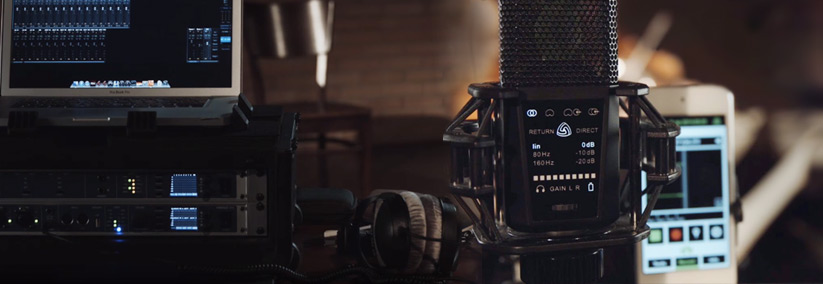
Frequency response and capsule size
An important figure is also the diameter of the membrane and the associated frequency response. Each instrument produces tones in a certain frequency range and if we want to record them faithfully, we need the microphone to record the sound in this frequency spectrum. Larger membrane microphones better capture bass, but are less sensitive to treble. These microphones are used to capture bass instruments such as a bass drum, a bass combo, or a tuba. On the other hand, we do not need a microphone to react to bass tones when recording violins, tubas or mandolins. In this case, a microphone with a smaller membrane that is more sensitive to higher tones is better used.
In general, it is best to have the most evened out frequency response and capture the sound as faithfully as possible. However, some microphones have a frequency response adapted directly to the instrument such as bass drum microphones.
Accessories
When buying a microphone, do not forget to buy the necessary accessories such as microphone cables high quality, stable stands and in the case of singers also various protections in the form of pop filters. For sensitive microphones, it is a good idea to buy a shock mount called a "spider" to replace the supplied collar.
Is everything clear? If you have any questions, please do not hesitate to call our toll free line 169 941 99 (Mon-Fri 9:00 a.m. - 4:00 p.m.) or write us at .

